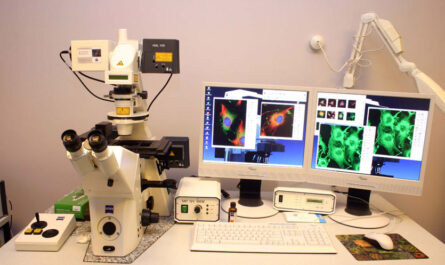Researchers at the University of California San Diego have made a breakthrough in ceramic materials, discovering a method to make them tougher and more resistant to cracking. By incorporating metals with more electrons in their outer shell, the team has unlocked the potential to enhance the ability of ceramics to withstand higher levels of force and stress than before.
Ceramics have long been favored for their exceptional properties, such as their ability to endure extremely high temperatures, resist corrosion and wear, and remain lightweight. These attributes make them suitable for a wide range of applications, including aerospace components, protective coatings for engines, and cutting tools. However, their brittleness has always been a limitation, as they tend to break easily under stress.
The recent study, published in Science Advances and led by UC San Diego nanoengineering professor Kenneth Vecchio, focuses on a type of ceramics known as high-entropy carbides. These materials have disordered atomic structures composed of carbon atoms bonded with multiple metal elements from the fourth, fifth, and sixth columns of the periodic table.
The researchers discovered that the key to improving ceramic toughness lies in utilizing metals from the fifth and sixth columns of the periodic table, which have a higher number of valence electrons. Valence electrons are electrons in the outermost shell of an atom that engage in bonding with other atoms. By using metals with a higher valence electron count, the researchers were able to enhance the material’s resistance to cracking under mechanical load and stress.
The additional electrons make the ceramic material more ductile, allowing it to deform more before breaking, similar to the behavior of metals. To better understand this effect, the team collaborated with Davide Sangiovanni, a professor of theoretical physics at Linköping University in Sweden, who performed computational simulations, while Vecchio’s team fabricated and tested the materials experimentally.
The researchers explored high-entropy carbides with various combinations of five metal elements, each yielding a different concentration of valence electrons. They identified two high-entropy carbides that exhibited exceptional resistance to cracking under load or stress due to their high valence electron concentrations. One combination consisted of vanadium, niobium, tantalum, molybdenum, and tungsten, while the other replaced niobium with chromium.
Under mechanical load or stress, these materials were able to deform or stretch, resembling the behavior of metals rather than the typical brittle response of ceramics. As the materials underwent deformation, bonds broke and formed atom-sized openings. However, the additional valence electrons around the metal atoms reorganized to bridge these openings, forming new bonds between neighboring metal atoms. This process preserved the material’s structure, inhibiting the growth of cracks.
Scaling up the production of these tougher ceramics for commercial applications is the next challenge. This advancement has the potential to revolutionize various industries that rely on high-performance ceramic materials, including aerospace and biomedical applications.
The improved toughness of these ceramics also opens opportunities for extreme applications, such as leading edges for hypersonic vehicles. Tougher ceramics could serve as a frontline defense, protecting vital components from debris impact and enabling these vehicles to better withstand the demands of supersonic flights.
Addressing the long-standing limitation of brittleness in ceramics has the potential to greatly expand their use and create next-generation materials that could revolutionize society, says Vecchio.
*Note:
1. Source: Coherent Market Insights, Public sources, Desk research
2. We have leveraged AI tools to mine information and compile it




